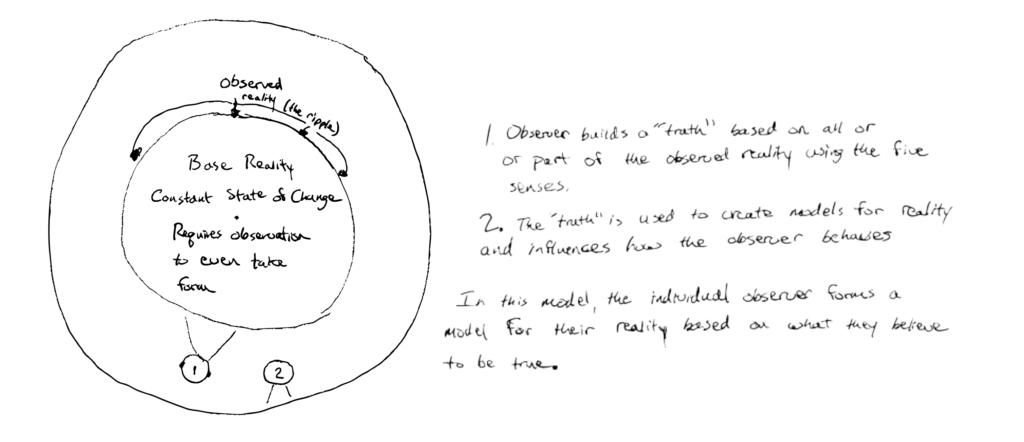Remember to Breath | Issue No. 3
Continued from Part I of this article, we established “truth” to have two qualities:
- The truth as we know it is only just an observation, an average of inputs. It is dynamic, subjective, and constantly evolving.
- The truth changes based on perspective and the power of the observer
Now that we have an understanding of the nature of reality, how might we apply this information in our lives? In the first part of this series, we combined two cups of water to to demonstrate how physical reality is one giant nuance. If that is true, we can also assume that everything we deem as “truth” in our own lives also contain nuance. Yes this means that the cups of water we measure for cooking can never be exact, but more importantly it is nuance on top of which we build all of our life models.
Do you brush your teeth twice a day? Floss? These are the first questions you will hear when you go to the dentist. This is because the “collective truth” is that in order to maintain healthy teeth, we should manually clean them two times a day. However, we can find examples of cultures – such as those sub-Saharan tribes studied by Dr. Weston Price – who have better dental health than a more modern society. Some of these cultures don’t brush their teeth at all, but we find that because of factors such as a difference in diet, they don’t have any cavities. In this simple example, we see that the commonly accepted truth isn’t complete, instead, clearly there are other factors which dictate the health of our teeth. There are also an endless array of anecdotal cases of people performing their own miracles, from healing cavities themselves, to curing terminal cancer with little to no modern medicine.
There are examples of this everywhere, and its a common path for Bitcoiners to wake up to them. Red meat diets, cutting out seed oils, home schooling – curious people around the globe are helping to break one another free from old truths. All it takes is for one person to read a book about seed oils, and the positive impact it makes in their life is enough to inspire a whole movement of people to do the same. Perhaps the greatest aspect of this truth-shattering is the momentum that it builds – showing us the nuances of one truth often causes us to question others, so much so that it can quickly snowball into a mass of confusion and it can be difficult to know where to stop, or rather, begin.
To someone at this stage, the world can feel like the drawing below:

Forgive the messy writing, but essentially what this diagram demonstrates is that, given any one “ripple”, we turn around and build our reality, from minute decisions to large, life-altering ones – and yes we build them sub-atomically as the theory of quantum superposition posits. For a Bitcoiner, that might be fighting an unjust system by buying more sats, running a node, or spreading the orange pill. These actions are rooted in the model that the system is unfair and obdurate and we must do something to save ourselves and others. More importantly, in my opinion, are the actions we choose not to take because of the fears our models give us, examples below.
Desire: Promotion at work. Fear: My co-workers won’t like me anymore. Behaviors: Act similar to my co-workers who are content where they are.
Desire: Visit a new country. Fear: It’s dangerous, I could get kidnapped. Behaviors: Go to the same place I went last year because I know it is safe.
What opportunities are we missing by not taking these actions, and how often are we missing them? The truths we believe and the models we form around them are the greatest detriment to our being able to live as our authentic selves.
Keep an eye out for the final installment in this series, where we we will dive deeper into these questions and their solutions.
From my node to yours,
Caleb
Decentralized Consciousness
Subscribe to Remember to Breath for your weekly dose of contemplation and presence!

Leave a Reply